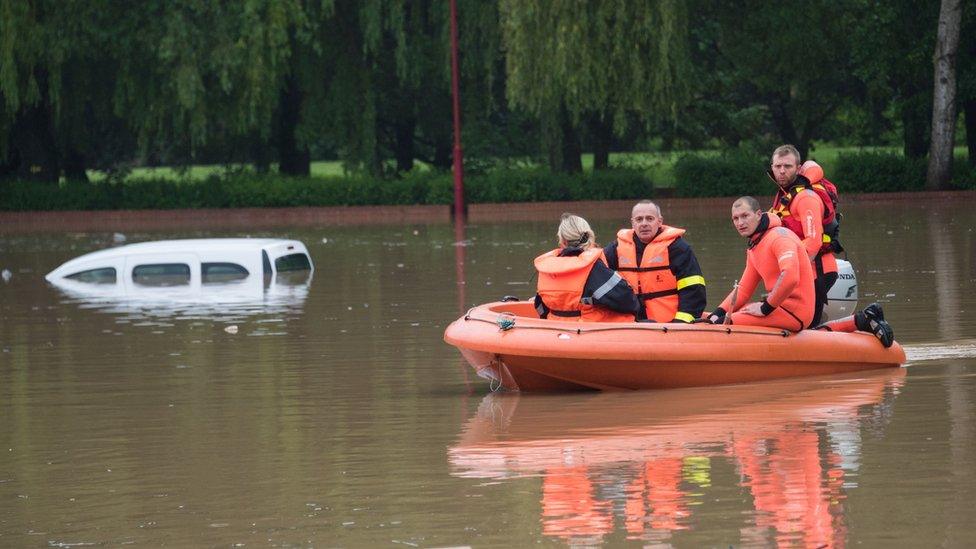Paris floods: Louvre and Orsay close to protect exhibits
- Published

Notices outside the Louvre explained the decision to close to visitors
Two museums in Paris have been closed to protect exhibits after the River Seine was predicted to hit a peak of up to 6m (19ft).
The Louvre and Orsay museums have moved works to higher floors as a precaution.
The Louvre's most famous painting, The Mona Lisa, has not been moved as it is housed on the museum's top floor.
The Orsay's website said it was likely to be shut "at least until Monday", while the Louvre did not give a reopening date.
"Due to the level of the river Seine, the Musee du Louvre will be exceptionally closed to the public on 3 June to ensure the protection of the works located in flood zones," it said.
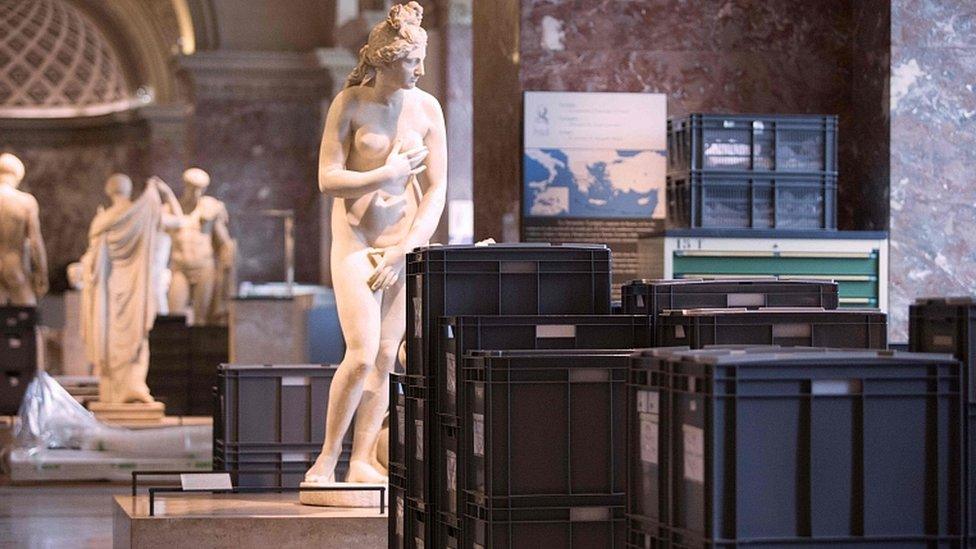
Staff at the Louvre have been working to protect exhibits at the museum
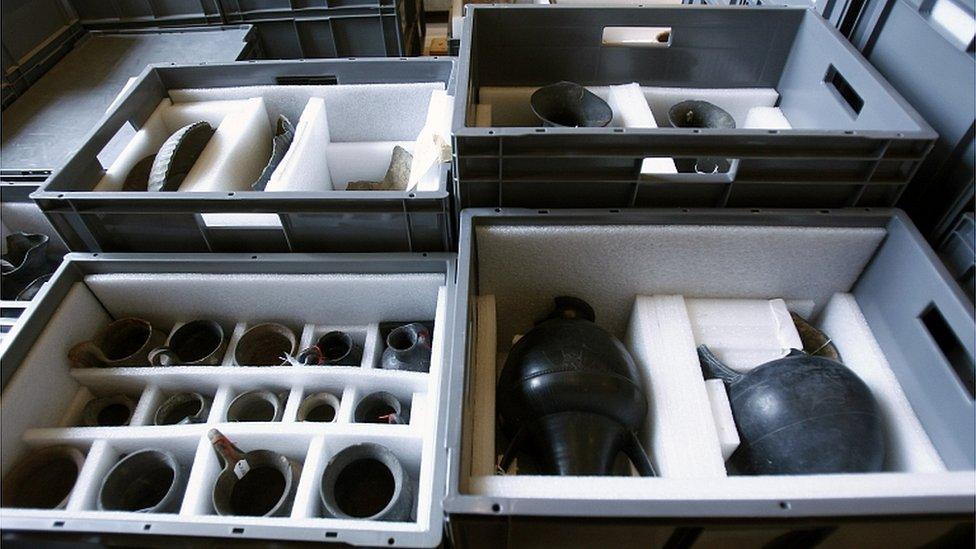
Crates of exhibits from the Louvre's storeroom were moved into the exhibition halls

The Orsay sits on the banks of the River Seine

The Orsay also posted notices explaining the closure to the public
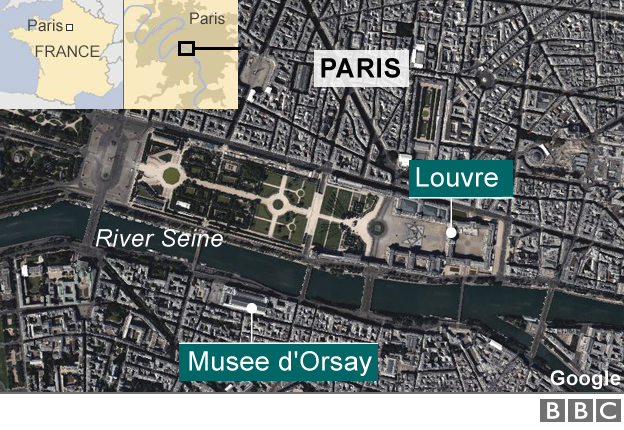
More downpours are forecast for the weekend across a band of central Europe from France to Ukraine.
At least 11 people have died in the past week as a result of the flooding in Europe and several towns in southern Germany have been devastated, with thousands being forced from their homes.
Belgium, Austria, the Netherlands and Poland have also been affected.

Analysis
York's Jorvik Viking Centre had to close in December after the River Foss flooded. Their chief executive David Jennings said all museums "have a disaster plan".
"For us, and it'll be the same for the Louvre, it depends on what your information is and the time frame you have for understanding the disaster that's about to happen.
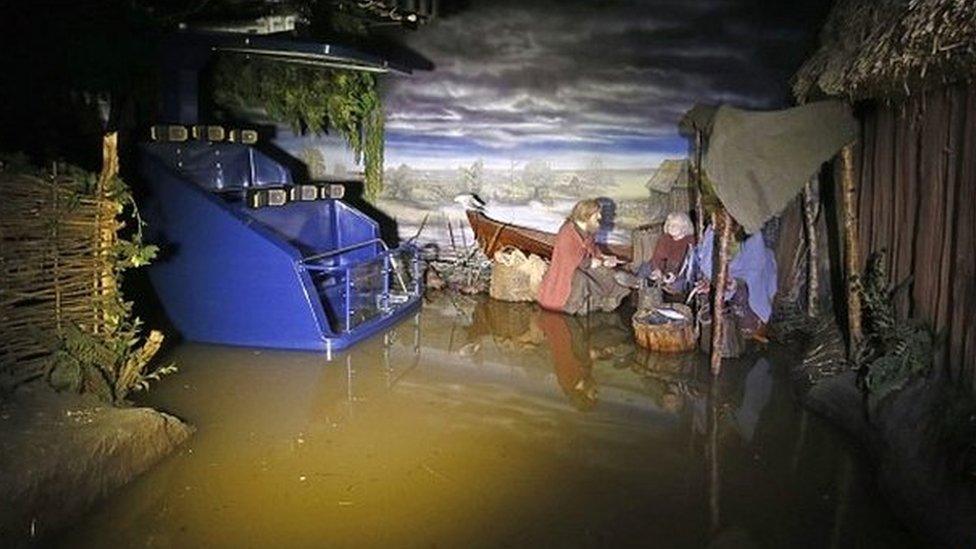
The museum was hit by water from the flooded River Foss
"The first thing is to protect the public and your staff. Then, the thing that's most important is protecting the collection.
"We closed the museum as soon as we could see there was a risk of flooding, and did the same thing the Louvre is doing to move the artefacts from the basement up to a safe place.
"We already had in place the basics of protection from water - and our conversation now is about how we enhance that protection in the future.
"It's about trying to put in place flood barriers at the entrances and the doors - they are the weak spots of any basemented building."
- Published3 June 2016
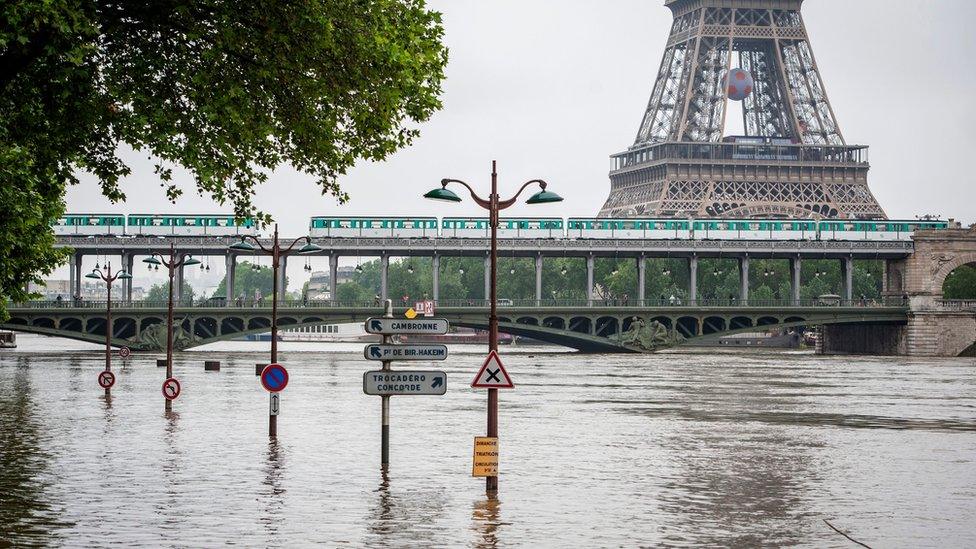
- Published31 May 2016
